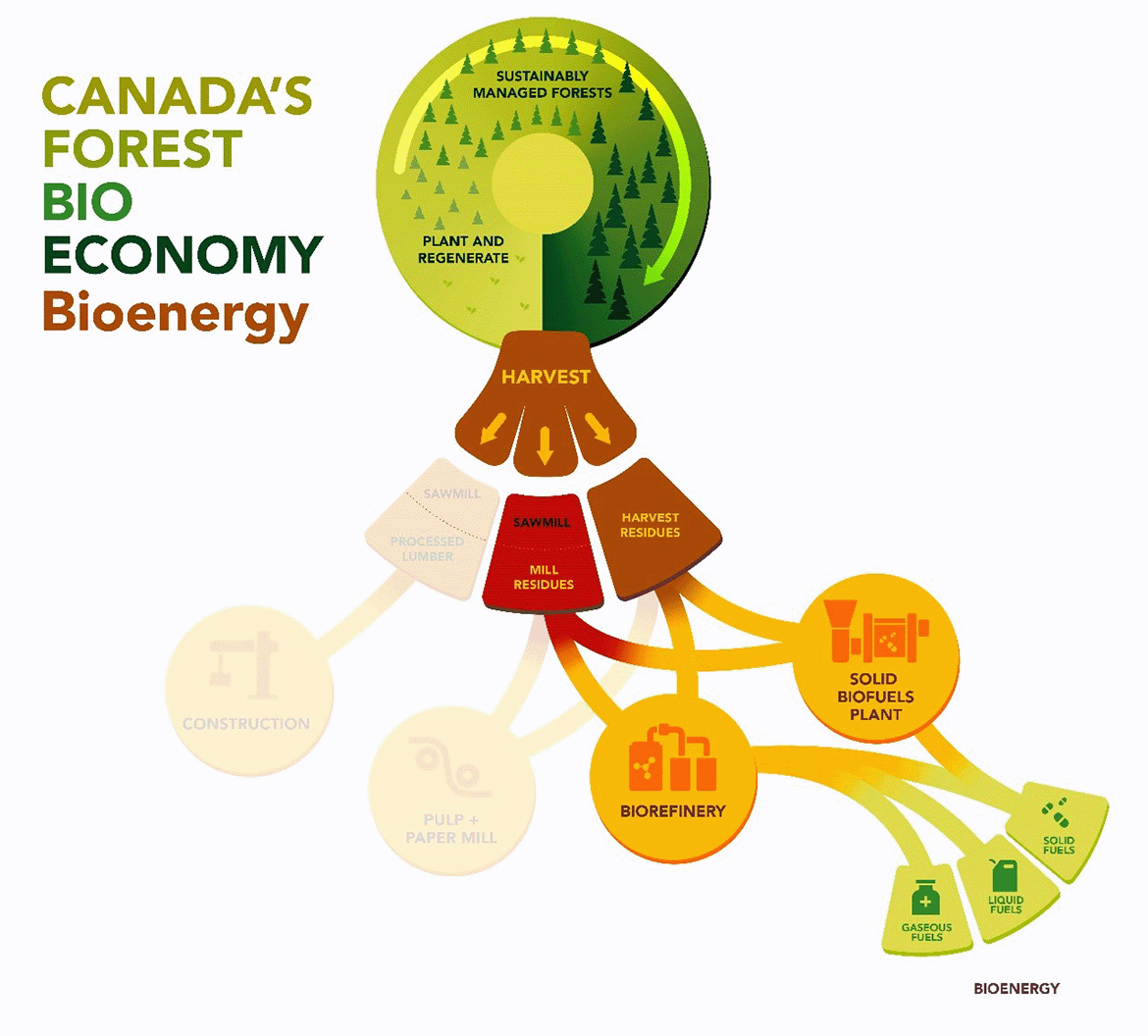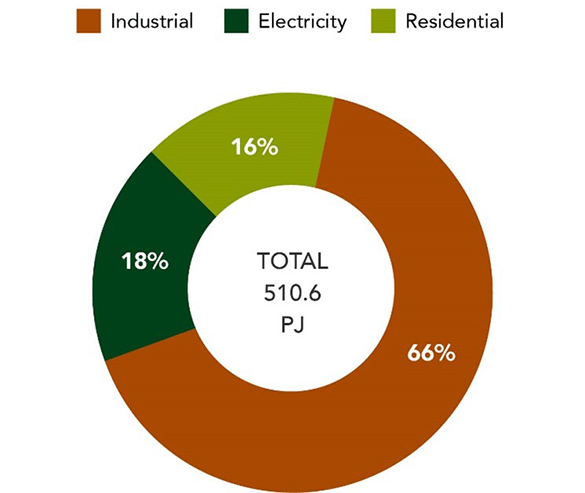Overview
Bioenergy is energy produced from biomass; recently living organisms, including plants, trees, animal by-products or microorganisms.
Biomass can be combusted directly to produce energy, in the form of heat and electricity. It can also be converted into liquid, gaseous or solid biofuels for use in a wide variety of applications.
Bioenergy is a renewable and low-carbon source of energy when produced from sustainably grown and harvested biomass, as well as from processing and manufacturing by-products.

Text version
Canada's forest bioeconomy - Bioenergy
This image illustrates how biofuels are manufactured within Canada’s forest bioeconomy.
The image begins with sustainably managed forests at the top followed by harvesting activities on the level below. The left side of the image, which includes lumber manufactured at sawmills to be used in construction, is faded out to indicate that this aspect of the cascading value chain is not relevant to the making of bioenergy.
Meanwhile, sawmill residuals (e.g., sawdust, wood chips, bark), and harvesting residues (e.g., treetops, branches) are shown in full colour, as these residues are sent to biorefineries and solid biofuel plants to manufacture solid, liquid and gaseous biofuels. The pathways from these residues to pulp and paper mills is also faded out.
Forest bioenergy from forest biomass
Forest biomass used for bioenergy comes from several sources, including:
- Sustainable forest management by-products and other harvesting waste:
- Typically includes branches, treetops and other parts of a tree left over from harvesting or sustainable forest management practices.
- Sometimes includes trees that cannot be used for other purposes such as trees damaged from pest infestations (e.g., mountain pine beetle) or forest-fires.
- Forest product manufacturing byproducts:
- Typically includes wood chips and sawdust left over from forest product manufacturing (e.g., sawdust from lumber production).
- Post-consumer wood waste:
- Typically includes wood waste from the construction industry (e.g., demolition materials), household and commercial waste (e.g., wooden furniture) and factories or warehouses (e.g., pallets, crates).
Types of biofuels
Forest biomass has historically been used for heating and cooking. Over the last few decades methods have advanced to convert forest biomass, using mechanical, chemical, thermo-chemical and biological processes, into three general types of biofuels:
- Liquid biofuels, such as renewable diesel, are used primarily in the transport and industrial sectors.
- Gaseous biofuels, such as renewable natural gas, are commonly used for generating heat or electricity.
- Solid biofuels, such as wood pellets and chips, are also largely used for generating heat and/or electricity.
Forest bioenergy in Canada
Bioenergy makes up over 6% of Canada’s total secondary energy supply, and 27% of Canada’s renewable energy supply, which consists primarily of solid biofuels made from forest biomass.
Over half of Canada’s forest bioenergy is used by industry, while the rest is split between residential heating and electricity generation.
Canada is also the second largest exporter of wood pellets, exporting over 80% of domestically manufactured wood pellets to markets in Europe and Asia.

Text version
This pie chart illustrates the use of forest bioenergy in Canada by sector, with industry making up 66% of this share, followed by 18% in the electricity sector and 16% in the residential building sector. The center of the pie chart shows a total of 510.6 petajoules (PJ) of bioenergy use in Canada.
Forest bioenergy opportunities in Canada
Bioenergy is expected to make up nearly 20% of the total global energy supply, and 17% of Canada's total energy supply, by 2050. Many biofuels can be used immediately to reduce emissions in transportation, industry, buildings and utilities. When paired with carbon capture storage and utilization technology it can result in net-negative emitting renewable energy that can help offset emissions in other sectors.
This provides significant opportunity for forest bioenergy in Canada to support growing demand domestically and internationally.
For more information on how Canada is supporting the development of forest bioenergy, visit Canada’s forest bioeconomy opportunities webpage.